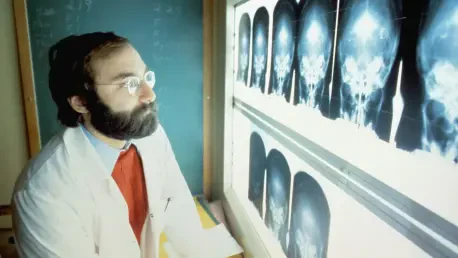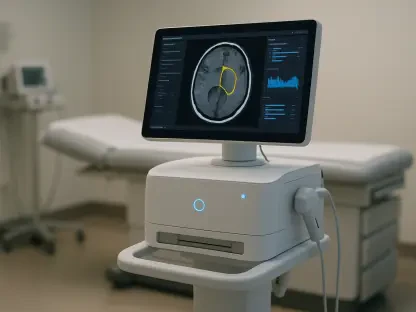In an evolving medical landscape, the efficiency of diagnostic imaging systems like PET/CT units is paramount. A recent report highlights that an overwhelming 75% of PET systems were maintained by original equipment manufacturers (OEMs) in the past year, with the remaining 25% managed either in-house or by third-party service providers. These systems have become critical tools across hospitals and imaging centers, necessitating reliable service agreements to ensure optimal functionality. Larger hospitals tend to utilize in-house teams to maintain these systems, whereas independent PET centers often rely on ISO services. Despite a diversification in service provision, OEM services remain the predominant choice. This scenario presents an interesting landscape regarding the ownership and maintenance of these essential diagnostic tools.
Service Contract Dynamics in PET/CT Systems
Predominance of OEM Services in PET System Maintenance
The dominance of OEM services for PET systems remains pronounced, as illustrated by healthcare facilities’ maintenance choices. As the majority of systems continue to be supported by OEMs, these services ensure high-quality, consistent maintenance, aligning with the technological complexity and sensitivity of PET/CT systems. However, the choice between different service providers reflects broader strategic decisions made by healthcare institutions. Larger hospitals often prefer managing more systems internally, facilitating immediate response and familiarity with the equipment. Independent PET sites, conversely, might find ISO services more advantageous due to cost-effectiveness and flexibility. This variation underscores the need for tailored service plans, highlighting the importance of carefully assessing service contract options to match individual facility requirements and capabilities. Recent trends have reinforced these preferences, demonstrating a pattern of reliance on OEM maintenance across varied healthcare environments.
Key Service Contract Features Enhancing System Efficiency
Post-warranty service contracts are vital to maintaining PET/CT systems, offering crucial components like preventive maintenance and technical support. While these contracts provide essential services, no single offering dominates across facilities, indicating variability among providers. Preventive maintenance ensures that technical issues are addressed before failure, reducing downtime and ensuring operational continuity. Technical support, another essential element, offers quick resolutions to system challenges, further enhancing performance reliability. In choosing service contracts, facilities are guided by these features and more, determining the best fit for their operational needs. It’s imperative to explore service contracts thoroughly to ascertain the spectrum of benefits and logistical support offered, aiming for maximum efficiency in imaging system operations. Diverse contract offerings present unique strengths, making it necessary for health institutions to evaluate their specific requirements meticulously and align with the most suitable service provider.
Analyzing Market Trends and Service Preferences
Insights from PET Market Summary Report
The market dynamics for PET/CT systems reflect a broader trend influenced by healthcare needs and technological advancements. Through a comprehensive survey conducted with 509 health professionals, insights into brand preferences and installed base characteristics illustrate these evolving dynamics. Such data provide a window into the strategic considerations of healthcare facilities when selecting service partners, weighing brand reliability along with service efficacy. As hospitals and imaging centers adapt to changing patient care demands, service contracts become pivotal in ensuring diagnostic precision and effectiveness. The survey results also reveal challenges faced by these institutions in navigating service contract agreements, pointing to consistent OEM reliance and variation in third-party service utilization. These findings emphasize the role of informed decision-making in crafting service contracts that enhance system operation and patient outcomes, offering crucial support for the ongoing functionality of diagnostic imaging systems.
Evaluating Service Contract Advantages for Hospitals
Understanding the advantages embedded within varied service contracts is essential for hospitals aiming to bolster their imaging capabilities. The emphasis on preventive maintenance and technical expertise is consistent across most service agreements, ensuring PET/CT systems operate at peak efficiency. Each service contract has distinct advantages, underlining the importance of evaluating coverage terms and conditions against institutional needs. As hospitals navigate the landscape of available service contracts, thorough assessment aids in choosing agreements that optimize system performance and cost-effectiveness. The diversity in service options facilitates an environment where strategic alignment with a service provider can directly influence operational efficiency and diagnostic accuracy. Consequently, hospitals are encouraged to engage deeply with contract details, balancing cost considerations with technology-driven service requirements, ultimately enhancing their diagnostic imaging capabilities.
Future Considerations for PET/CT Service Contracts
The dominance of OEM services in maintaining PET systems persists strongly, evidenced by healthcare facilities’ maintenance choices. Most systems still rely on OEMs, guaranteeing high-quality and consistent upkeep, crucial for the technologically complex and sensitive nature of PET/CT systems. However, the decision between various service providers reflects broader strategic considerations by healthcare institutions. Larger hospitals often opt to manage systems internally, ensuring swift responses and familiarity with equipment. Independent PET sites may prefer ISO services for their cost-effectiveness and flexibility. Such variations highlight the necessity for customized service plans, emphasizing the importance of carefully evaluating service contract options to meet specific facility needs and capabilities. Current trends have solidified these preferences, revealing a consistent pattern of reliance on OEM maintenance across diverse healthcare settings, underscoring the intricacies of equipment management.









